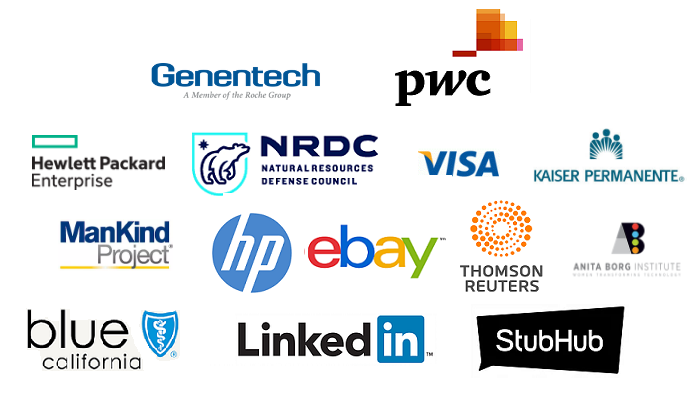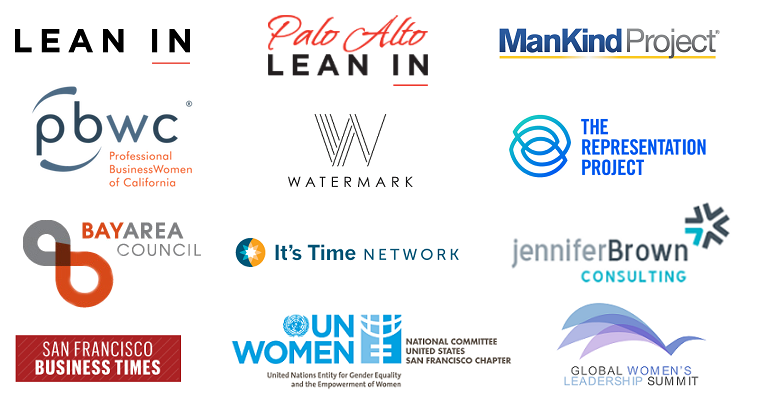
Upper Management Being Receptive Is Key In Pt. 6 Of Problem, Opportunities And Solutions For Gender Equality In Corporate Culture
In Pt. 6 Of Problem, Opportunities And Solutions For Gender Equality In Corporate Culture, a panel of corporate leaders at Better Man Conference 2017 shares answers to questions from the audience such as:
- "Do you think a Chief Diversity Officer that is just a middle aged white guy, would he make it as a Chief Diversity Officer?"
- "How are your employees pushing you as companies to take a stand on some of these social issues?"
Answers to the second question above indicate a theme of receptivity by upper management in helping to advance gender equality in corporate culture. I'd go as far as to say it's key in unlocking more gender equality in the workplace. For the full context and answers to the questions above, read below or watch the video as Co Founder of Inclusionary Leadership Group, Dale Thomas Vaughn, continues to moderate the panel featuring corporate leaders, Dr. Ronald Copeland from Kaiser Permanente, MD SVP and Chief Diversity Officer of National Diversity Inclusions, Strategy and Policy, Lesley Slaton Brown from HP Inc., Chief Diversity Officer, Nadia Chargualaf, Telstra VP of HR for U.S. Operations and Mike Dillon, Chief Diversity Officer at PwC.
If you would like to read through or listen in on the full series, The first five parts of the series can be found here:
Part 1 Of Problem, Opportunities And Solutions For Gender Equality In Corp. Culture
Part 2 Of Problem, Opportunities And Solutions For Gender Equality In Corp. Culture
Part 3 Of Problem, Opportunities And Solutions For Gender Equality In Corp. Culture
Part 4 Of Problem, Opportunities And Solutions For Gender Equality In Corp. Culture
Part 5 Of Problem, Opportunities And Solutions For Gender Equality In Corp. Culture
Dale Thomas Vaughn:
I have two or three minutes left, so I want to take a few questions. Here in the front.

Mike Dillon, Chief Diversity Officer at PwC (Photo Credit: San Francisco Business Times)
Audience Member #1:
So a question for Mike.
Mike Dillon:
Yes.
Audience Member #1:
I guess you saw this coming. I'm coming from an assumption that you’re not part of those legally protected characteristics? You’re just a plain middle class, middle aged white guy...is that correct?
Mike Dillon:
(Laughs)
I didn't see that coming, but yes. And I'm an openly gay man in the firm. So when someone here said about feeling excluded or feeling different...I grew up in a firm, for thirty years I’ve been here, I’ve been openly gay.

IT’S REALLY IMPORTANT TO PAY IT FORWARD FOR ALL DIMENSIONS OF DIVERSITY
It was not something that was fully accepted at PwC when I started. Over time I'm really proud of where the firm has evolved, internally and externally around the LGBT community. So coming into this role I had that dimension of diversity but I feel it’s really important to pay it forward for all dimensions of diversity for what the firm has done for me.
Audience Member #1:
Excellent. The question then kind of morphs into...Do you think a Chief Diversity Officer that is just a middle aged white guy, would he make it as a Chief Diversity Officer? And would that make a difference for engaging men in the workplace?
Mike Dillon:
The emphasis has been on middle aged.
(Laughs)
(Audience Laughs)
Audience Member #1:
...white guy.
Mike Dillon:
White guy, yes. But I keep hearing this “middle aged”.. I do absolutely! Because I think what we're talking about here today and engaging white men in the workplace as allies as just a different part of the conversation I think is incredibly important to our strategy.

YOU THINK THAT THEY’RE STILL THE MAJORITY, BUT THEY’RE SOON TO BE THE MINORITY AT SOME POINT IN TIME
You think about that they’re still the majority, but they’re soon to be the minority at some point in time. I think you can't do what we're trying to do around diversity and inclusion with only talking to our diverse staff. We're trying very hard to energize what we're doing around white men in the workplace.
(audience applause)
Dale Thomas Vaughn:
Thank you. Over here.
Audience Member #2:
We've been watching the new administration now for nine months, or whatever it is and a lot of leaders from the world of commerce decided they don't want to be affiliated with certain policies and certain practices that they see coming from the current administration. So what I wonder from our leaders on stage is, "How are your employees pushing you as companies to take a stand on some of these social issues? Which is a dicey situation, I would imagine....maybe we'll start with Lesley, just because I know her.
Lesley Slaton Brown:
I somehow knew you were going to put that over to me.
Audience Member #2:
I'm really interested in how our employees actually pushing the enterprise to take a stand and be more vocal and so forth.

Lesley Slaton Brown, Chief Diversity Officer of HP inc. at Better Man Conference 2017
Lesley Slaton Brown:
WE LIKE TO CALL PEOPLE INTO THE CONVERSATION, RATHER THAN CALL THEM OUT
The views I represent are my own and not of my company. Great question! Our people are pushing us hard and I absolutely love it. I absolutely love it! We are fortunately being led by a leader that is willing to step up and take a stand. Our CEO has signed the ‘CEO in Action Pledge’ and it’s more than just a pledge for us, it is a way of life, it’s a way of work, it’s a part of our DNA, it’s how we work, it’s how we behave and I hope it’s how we represent ourselves on a regular basis. I will say personally I would love to see us be even more proactive than we are today. A lot of our statements, our comments have been reactionary to other societal issues that are going on. But we're in it, we're in the game and in some cases we're more proactive than in other cases, and you’ll see us leveling that out.
But for HP, it is that as we've split into two companies, we're just approaching year two in November, we have a new CEO that has risen up from the business into CEO status and he’s finding his voice. We have an environment in which we like to call people into the conversation rather than call them out. We're allowing him that space to grow, he’s found his voice, and he’s now taking action.
Dr. Ronald Copeland:
The push is very active and it’s no surprise that in our organization, you know we're a mission driven organization, we attract people who feel very strongly about the mission of providing health care and equity and so forth. We're highly diverse and so when we have policy issues on the table about people’s backgrounds, their ethnicity, immigrant status, and so on, if it doesn't impact people individually, it impacts people that they know and love; family or even our patients and so on.
TO CREATE AN INCLUSIVE CONVERSATION IN A SAFE SPACE, THE FACT THAT PEOPLE WILL HAVE A PARTICULAR VIEW HAS TO BE PART OF THOSE CONVERSATIONS AS WELL

The way that we try to manage that is; one creating safe spaces where people can have those conversations and we understand when you talk the about the political realm, one as a not-for-profit company, we clearly don't take political positions in a public sense. We use those opportunities to inform our values, our commitment and as relates to what we know and learned about health care policy, we talk about our results and where we think there are opportunities. We definitely inform and engage policy, we allow people to have space to have those conversations inside and we recognize not everybody sees these issues the same way so, if you’re going to create an inclusive conversation in a safe space, the fact that people will have a particular view has to be part of those conversations as well.
But our CEO really takes each of these opportunities particularly on the inside of our organization, to make sure that our guideposts, our values and our mission and our commitment to that.....and the way he phrases it is, “Our organization is a little bit over 70 years old, and through that 70 years we've gone through lots of administrations and haven't always agreed with policies or practices or changes in the law but we continue in all that time to stay committed to our values and our mission and that’s our guidepost and I think 70 years into it, we're doing pretty well.”
Dale Thomas Vaughn:
Any other questions?

Audience Member #3:
Hey folks, excellent to hear your expertise and experience, I really love it. So a question, (there's) a lot of conversation about diversity...one of the challenges I feel is challenging us as a corporate America is, we focus a lot on the kind of “the ten key areas” of diversity about gender and race and color and religion and things like that...but obviously diversity is much broader than that so how do we measure cognitive diversity, because that’s more than just numbers? That’s one (question.) The second (question) is about inclusion...How are you guys measuring inclusion? Because in some ways, it’s more important than just diversity.
TO BE CONTINUED.....
Better Man Conference 2017 Recap Report

We are proud to share this recap report from the Better Man Conference 2017 as just last month, 200+ leaders and many great diverse speakers and panelists, both men and women came together to be a part of the movement to engage men as inclusionary leaders at the Better Man Conference 2017. This year we grew in both quantity and quality. That’s due to your involvement. We thank each and every attendee, speaker, sponsor, marketing partner, and supporter for being such an important part of the men's inclusionary leadership movement. See the recap report here.
THANK YOU to 2017 BETTER MAN CONFERENCE SPONSORS

THANK YOU to 2017 BETTER MAN CONFERENCE MARKETING PARTNERS


